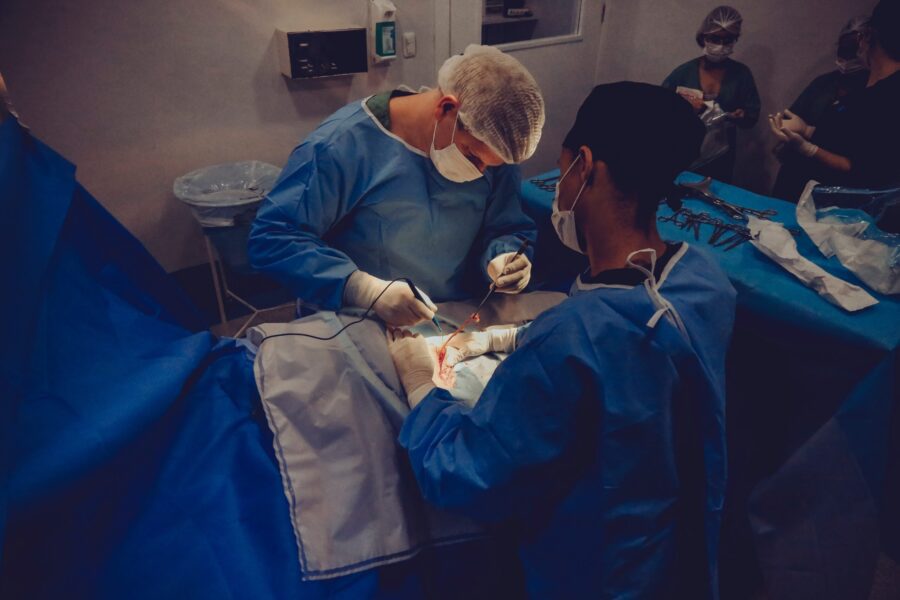
Can You Sue a Telemedicine Provider for Medical Malpractice?
Telemedicine has transformed healthcare delivery across Virginia, offering patients convenient access to medical care from their homes. This technology-driven approach to healthcare has become particularly valuable in communities like Roanoke, where patients may face geographic barriers to accessing specialized medical services. However, the rapid expansion of telemedicine has raised important questions about accountability and patient safety.
When medical care is delivered remotely, patients may wonder whether they have the same legal protections as they would during traditional in-person visits. The answer is clear: telemedicine providers are held to the same professional standards as their in-person counterparts, and patients retain the right to pursue legal action when negligent care causes harm.
This comprehensive guide explores the legal landscape surrounding telemedicine malpractice in Virginia, examining how traditional malpractice principles apply to remote healthcare delivery and what patients need to know about protecting their rights.
Understanding Medical Malpractice Law in Virginia
Medical malpractice occurs when a healthcare provider fails to meet the accepted standard of care, resulting in harm to the patient. Virginia law requires patients to prove four essential elements to establish a successful malpractice claim.
First, there must be a doctor-patient relationship that creates a duty of care. Second, the healthcare provider must have breached the applicable standard of care through action or inaction. Third, this breach must have directly caused the patient’s injury or worsened their condition. Finally, the patient must have suffered actual damages as a result of the provider’s negligence.
These fundamental principles apply equally to telemedicine encounters. The fact that care is delivered remotely does not diminish the provider’s obligation to deliver competent medical care or reduce the patient’s right to seek compensation for negligent treatment.
Virginia’s medical malpractice laws include specific procedural requirements that can significantly impact a patient’s ability to recover damages. The state imposes a statute of limitations that generally requires patients to file their claims within two years of discovering the injury. Additionally, Virginia law caps non-economic damages in medical malpractice cases, making it crucial for patients to understand the full scope of their potential recovery.
Telemedicine and the Standard of Care
The standard of care in telemedicine represents one of the most complex aspects of these cases. Healthcare providers delivering care through telemedicine platforms must meet the same professional standards expected in traditional clinical settings, despite the inherent limitations of remote consultations.
Virginia courts recognize that telemedicine providers cannot physically examine patients in the same manner as in-person practitioners. However, this limitation does not excuse providers from conducting thorough evaluations within the constraints of the technology being used. Providers must adapt their diagnostic approach to account for the remote setting while maintaining professional competence.
The standard of care in telemedicine includes several key components. Providers must obtain comprehensive medical histories, ask appropriate follow-up questions, and utilize available technology effectively to assess patient conditions. They must also recognize the limitations of remote examinations and refer patients for in-person evaluation when necessary.
Documentation requirements in telemedicine cases are particularly stringent. Providers must maintain detailed records of their remote consultations, including notes about technology used, patient responses, and clinical decision-making processes. Poor documentation can significantly complicate a provider’s defense in a malpractice case.
Technology failures or limitations do not automatically excuse medical errors. Providers are expected to understand the capabilities and limitations of their telemedicine platforms and adjust their practice accordingly. When technology interferes with proper patient care, providers must take appropriate steps to ensure patient safety.
Establishing Liability in Telemedicine Malpractice Cases
Proving negligence in telemedicine cases requires careful analysis of the unique circumstances surrounding remote healthcare delivery. Patients must demonstrate that the telemedicine provider’s conduct fell below the accepted standard of care for similar circumstances.
The documentation of telemedicine encounters plays a crucial role in establishing liability. Electronic health records, communication logs, and technology audit trails can provide valuable evidence about what occurred during the remote consultation. Unlike traditional malpractice cases where hospital records may be extensive, telemedicine cases often rely heavily on digital documentation that may be limited or incomplete.
Expert testimony becomes particularly important in telemedicine cases. Medical experts must evaluate whether the provider’s actions were appropriate given the constraints of remote care delivery. These experts must understand both the medical issues involved and the technological aspects of telemedicine platforms.
Causation can be challenging to establish in telemedicine cases, particularly when patients receive care from multiple providers or when there are gaps in treatment. Patients must demonstrate that the telemedicine provider’s negligence directly contributed to their injury, rather than underlying medical conditions or other factors.
The role of technology in telemedicine malpractice cases adds another layer of complexity. Courts must determine whether technology failures contributed to medical errors and whether providers took appropriate steps to address technological limitations. This analysis requires careful examination of both the technology used and the provider’s response to any technical issues.
Common Types of Telemedicine Errors
Misdiagnosis represents one of the most significant risks in telemedicine practice. Without the ability to conduct physical examinations, providers may miss important clinical signs or fail to recognize serious conditions. This risk is particularly acute when patients present with symptoms that could indicate multiple conditions or when physical examination findings are crucial for accurate diagnosis.
Prescription errors occur frequently in telemedicine settings. Providers may prescribe inappropriate medications without adequate patient evaluation or fail to consider potential drug interactions. The remote nature of telemedicine consultations can make it difficult for providers to assess patient responses to medications or identify adverse effects promptly.
Inadequate follow-up care represents another common source of liability in telemedicine cases. Providers may fail to schedule appropriate follow-up appointments, neglect to monitor patient progress, or inadequately communicate with other healthcare providers involved in the patient’s care. These gaps in care coordination can lead to delayed diagnosis or treatment of serious conditions.
Communication failures between providers and patients can result in serious medical errors. Technical difficulties, poor audio or video quality, or inadequate explanation of medical conditions can lead to misunderstandings that affect patient care. Providers must ensure effective communication despite the technological barriers inherent in remote consultations.
Failure to recognize when in-person evaluation is necessary constitutes a significant risk in telemedicine practice. Providers must understand the limitations of remote examinations and refer patients for in-person care when appropriate. Delaying necessary in-person evaluation can result in missed diagnoses or delayed treatment of serious conditions.
Legal Options for Telemedicine Malpractice Victims
Patients who believe they have been harmed by negligent telemedicine care have several legal options available under Virginia law. The first step involves consulting with an experienced medical malpractice attorney who can evaluate the strength of the potential claim and advise on the best course of action.
Virginia’s medical malpractice laws provide several avenues for recovery, including compensation for medical expenses, lost wages, pain and suffering, and other damages resulting from the provider’s negligence. However, the state’s damage caps and procedural requirements can significantly impact the amount of compensation available to patients.
The complexity of telemedicine cases often requires extensive investigation to gather evidence and establish liability. This process may involve reviewing electronic health records, analyzing technology logs, consulting with medical experts, and reconstructing the events leading to the patient’s injury. The remote nature of telemedicine care can make evidence gathering more challenging than in traditional malpractice cases.
Settlement negotiations in telemedicine cases often involve unique considerations related to technology, documentation, and the standard of care in remote healthcare delivery. Insurance companies may argue that the limitations of telemedicine excuse certain types of errors or that patients assumed the risks associated with remote care.
Litigation in telemedicine cases requires attorneys who understand both medical malpractice law and the technological aspects of remote healthcare delivery. These cases often involve complex expert testimony about medical standards, technology capabilities, and the appropriate standard of care for telemedicine providers.
The Importance of Experienced Legal Representation
Telemedicine malpractice cases present unique challenges that require specialized legal expertise. The intersection of medical care, technology, and legal liability creates complex issues that general practice attorneys may not fully understand. Patients need legal representation from attorneys who have experience handling medical malpractice cases and understand the specific issues involved in telemedicine litigation.
An experienced medical malpractice attorney will conduct a thorough investigation of the telemedicine encounter, including review of all electronic records, communication logs, and technology documentation. This investigation often requires working with medical experts who understand both the clinical issues and the technological aspects of telemedicine platforms.
The attorney’s role extends beyond simply filing a lawsuit. Effective representation involves developing a comprehensive understanding of the medical issues, identifying all potentially liable parties, and building a compelling case for damages. This process requires significant resources and expertise that most patients cannot manage on their own.
Insurance companies often defend telemedicine cases aggressively, arguing that the limitations of remote care excuse certain types of errors. An experienced attorney can counter these arguments effectively and ensure that patients receive fair compensation for their injuries.
The procedural requirements for medical malpractice cases in Virginia can be complex and unforgiving. Missing important deadlines or failing to comply with statutory requirements can result in dismissal of otherwise valid claims. Experienced attorneys understand these requirements and ensure that cases are handled properly from the beginning.
Protecting Your Rights in Telemedicine Care
Patients who have been harmed by negligent telemedicine care should not assume that their legal options are limited because the care was delivered remotely. Virginia law provides the same protections for telemedicine patients as for those receiving traditional in-person care, and healthcare providers cannot escape liability simply because they were treating patients remotely.
The key to successful telemedicine malpractice cases lies in understanding how traditional malpractice principles apply to remote healthcare delivery. While the technology may be different, the fundamental obligation to provide competent medical care remains the same. Patients who believe they have been harmed by negligent telemedicine care should seek legal advice promptly to protect their rights and explore their options for recovery.
The rapid growth of telemedicine has created new opportunities for medical errors and patient harm. As this technology continues to evolve, patients must remain vigilant about the quality of care they receive and understand their legal rights when that care falls below acceptable standards.
If you believe you have been harmed by negligent telemedicine care, do not let the remote nature of the treatment discourage you from seeking legal advice. The experienced medical malpractice attorneys at Strickland, Diviney & Segura understand the complexities of telemedicine cases and can help you evaluate your legal options. Schedule a consultation today with Strickland, Diviney & Segura by calling (540) 982-7787.






